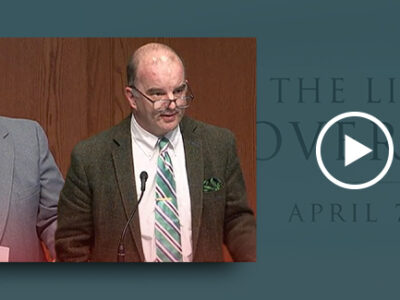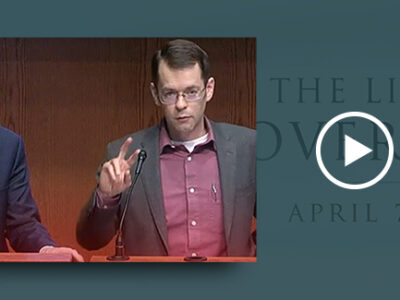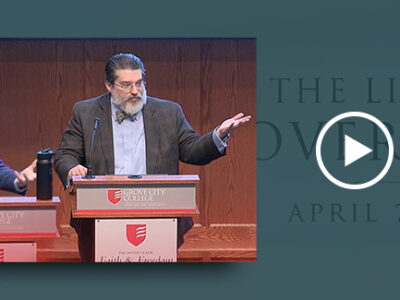Six hundred million and counting. That is the number of dollars that The Passion of the Christ has grossed and the number of reasons why Disney has been marketing its new film, The Lion, the Witch, and the Wardrobe, to Christian audiences. With reputations to protect, Disney executives disavow any suggestion that they produced a “Christian” film, but this hasn’t stopped them from providing “sneak peaks” to mega-churches across the nation in an effort to reap a financial harvest from religious fields. Helping to “bring in the sheaves,” Christians who for years have felt that morally in Hollywood it is “always winter and never Christmas,” now believe St. Nick might finally return. Indeed, these are heady days for movie-loving Christians as, along with The Passion, they witnessed The Lord of the Rings become one of the most successful franchises in movie history and have even seen political documentaries such as The High Cost of Low Prices (an anti-Wal-Mart expose) specifically target their business. With their financial clout finally gaining Hollywood’s attention, many Christians are rejoicing but others remember the old lament “to be careful what you wish for.”
To many Christians, C.S. Lewis is the most important Christian writer of the 20th century. With 34 books published representing a host of different genres, The Lion, the Witch, and the Wardrobe remains among Lewis’ best known and best loved works; so many believers eagerly anticipate its arrival on the silver screen. Interestingly though, Lewis probably would not join them in line. In 1954, producers approached Lewis about filming his tale and he responded “I am sure you understand that Aslan is a divine figure, and anything remotely approaching the comic (above all anything in the Disney line) would be to me simple blasphemy.” Admittedly, Lewis was rejecting a made-for-television animated version of his work, and after his death, Narnia has been put to film in animated and live-action shows that have not dented the novels’ popularity. Nevertheless, since Lewis believed that an essential strength of the fantasy literary genre was the reader’s collaboration with the author in imagining another world into existence, “outsourcing” this job to even a skilled movie director should bring pause.
Moviegoers will generally enjoy this film, though it does not attain the cinematic heights or weightiness of its fantasy “cousin” The Lord of the Rings. Sharing the same special effects company and shooting locales frequently made the cinematic Narnia appear technologically and geographically to be the cinematic Middle Earth. With the main characters either children or pure computer animation, however, Narnia could not conjure the same epic gravitas as Rings. Nevertheless, Lewis’ storyline, which borrows so generously from the Bible, proves once again its ability to inspire. Lewis’s London setting was maintained since the Harry Potter films convinced Disney that Americans will watch stories about British children, even if they do speak the “Queen’s English” (consideration was given at one time to setting the tale in Brentwood, California).
For the devotees of Lewis, the foremost question remains “is the movie faithful to the work?” The answer will generally please them. Anyone familiar with the contrasting demands of literary and visual mediums will not be surprised that one-page battles turned into forty-minute clashes while pages conveying thoughtful wrangling are now conveyed through a raised eyebrow. The faithful will be even more interested though, in the philosophy behind the tale, and they will probably be pleasantly surprised. Thinly veiled references to Lewis’s famous “liar, lunatic, Lord” argument for the divinity of Jesus remain, as does unmistakable imagery that harkens the renting of the Temple’s curtain. Even some additions reinforced the story’s religious symbolism, most notably when Aslan states “it is finished.”
Despite the “concessions” made to the original, the filmmakers remained convinced that many of Lewis’s “antiquated” British values should not play in Postmodern Peoria. Among the most noticeably (and predictably) absent were Lewis’s views on chivalry and just war. In the novel, Lewis had Father Christmas explain to Susan and Lucy that they should not use their weapons in warfare because “battles are ugly when women fight.” In our morally “advanced” times though, sentiment is labeled “sexist” and so the movie’s director discarded the scene saying, “there’s no way I could put that in the film.”
Ultimately, if the film leads another generation to Narnia through reading its tales, any shortcomings can probably be forgiven. However, for those convinced they have actually been through the wardrobe by watching the film, it has only cheated them of a profound experience. For those who had already been to Narnia; well, they already knew there’s only one true way back.




